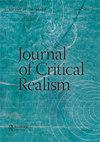Why and how Barcelona has become a health inequalities research hub? A realist explanatory case study
IF 2.9
0 PHILOSOPHY
引用次数: 1
Abstract
ABSTRACT Despite the increase in global research on health inequalities, more needs to be done to strengthen efforts to inform local interventions. In this article, we ask what determines the local capacity to engage in research on health inequalities. A bibliometric analysis identified Spain as the 10th highest global contributor to this research field (1966–2015), yet a significant proportion of this production was affiliated to just a few institutions in Barcelona. How and why has the city produced so much health inequalities research over four decades? A realist explanatory case study was conducted to test and refine six causal mechanisms, and identify the contextual conditions that might have activated them to generate this outcome. Data was triangulated from 10 semi-structured interviews, and scientific and grey literature. Our findings confirmed that several of our proposed mechanisms - functioning under certain conditions over time - explain the large volume of health inequalities research in Barcelona. Based on these findings, key lessons from the city's experience are suggested. Further research is needed on this topic.巴塞罗那为什么以及如何成为卫生不平等研究中心?一个现实主义的解释性案例研究
尽管关于卫生不平等的全球研究有所增加,但需要做更多的工作来加强为地方干预提供信息的努力。在本文中,我们询问是什么决定了地方参与卫生不平等问题研究的能力。文献计量学分析将西班牙确定为该研究领域的第十大全球贡献者(1966-2015),但这一生产的很大一部分仅隶属于巴塞罗那的几个机构。这座城市是如何以及为什么在过去40年里开展了如此多的健康不平等研究?一个现实的解释性案例研究进行了测试和完善六种因果机制,并确定可能激活它们产生这一结果的情境条件。数据来自10个半结构化访谈,以及科学文献和灰色文献。我们的研究结果证实,我们提出的一些机制——在特定条件下随着时间的推移发挥作用——解释了巴塞罗那大量的健康不平等研究。基于这些发现,本文提出了从城市经验中吸取的主要教训。这一课题需要进一步的研究。
本文章由计算机程序翻译,如有差异,请以英文原文为准。
求助全文
约1分钟内获得全文
求助全文

 求助内容:
求助内容: 应助结果提醒方式:
应助结果提醒方式:


